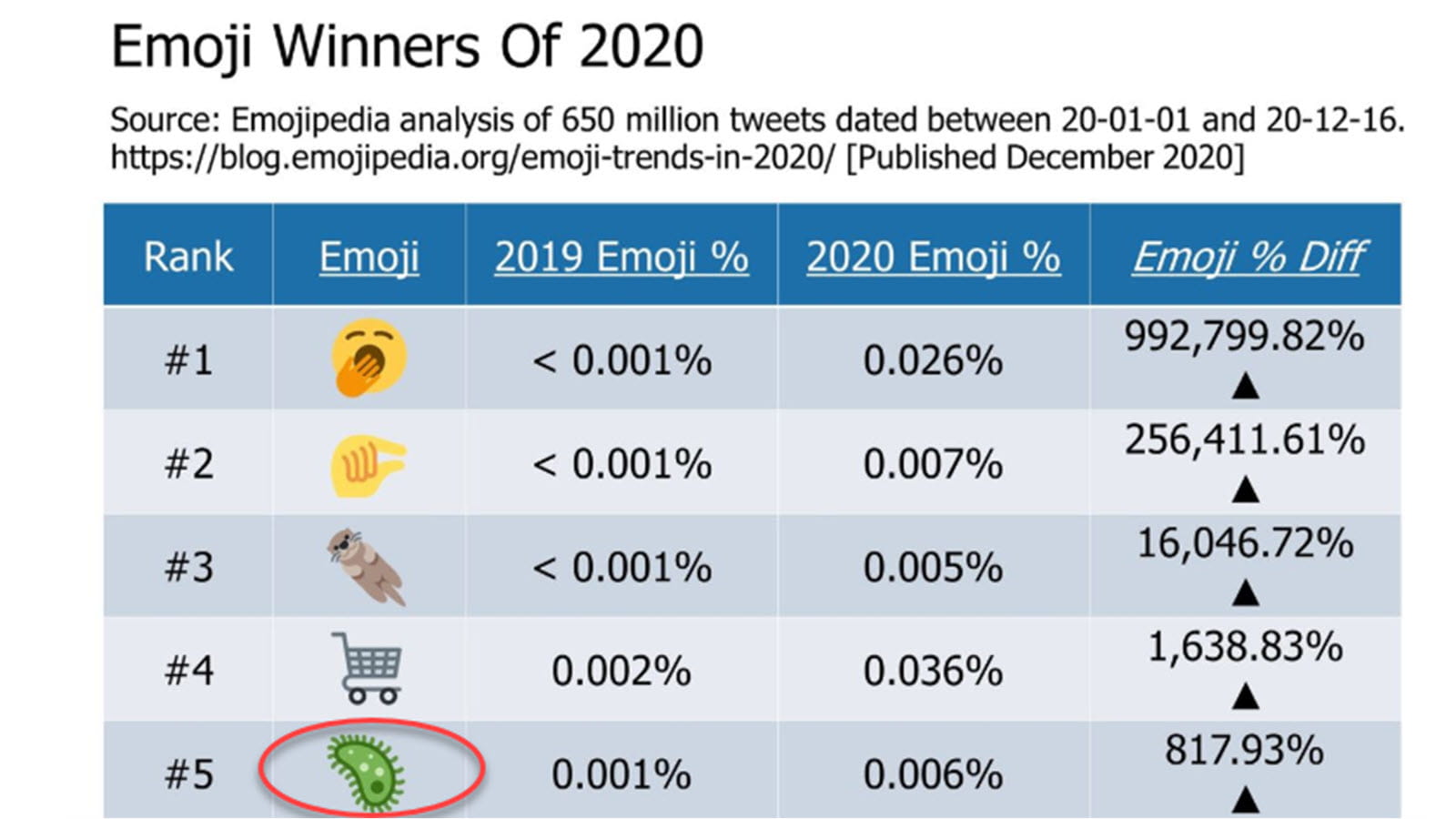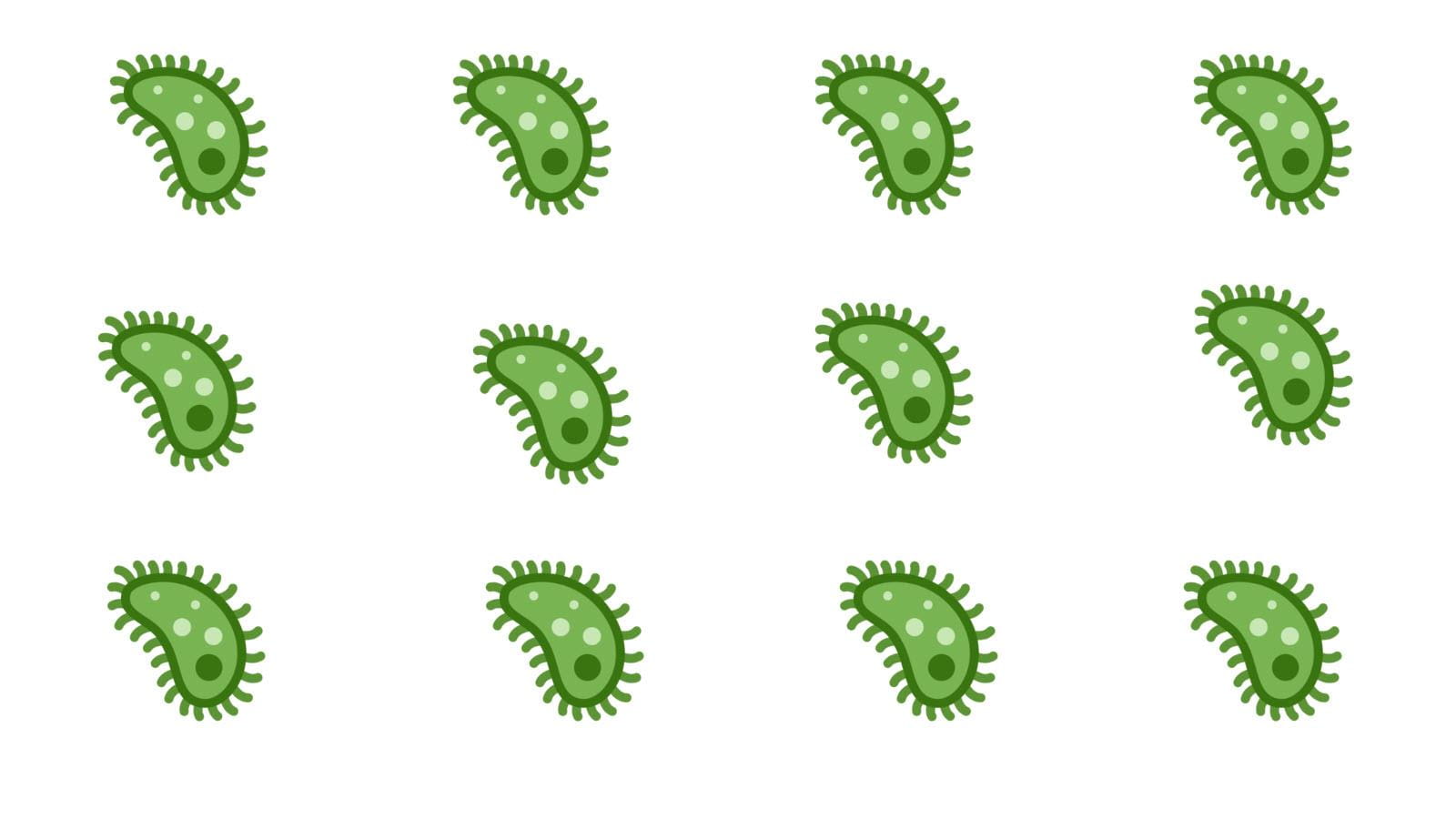Every year, the authorities on emoji usage take stock of which of the tiny graphics people shared the most. Smiling, laughing faces tend to lead the way. The red heart and the thumbs up are sure to make the list of most popular. Test tubes, petri dishes and other science emoji usually garner little attention.
But in 2020, the green microbe emoji shot to prominence though for an unhappy reason. The microbe, which on some platforms bears striking similarities to the coronavirus, quickly became shorthand for the virus that causes COVID-19. In March, the microbe suddenly became among the most used emojis on Twitter and experienced 800% growth in usage for 2020, according to an Emojipedia analysis of 650 million tweets.
The increased usage of the microbe is staggering when you compare March 2019, when COVID-19 didn’t exist, and March 2020, when much of the world shut down, said Emojipedia's Deputy Emoji Officer Keith Broni. Broni issued an end-of-year report that listed the microbe at #5 among the fastest-growing emojis. The yellow face wearing a medical mask also shot up 87%, according to Bronis’s report.
The scholarly study of emoji has both a silly and a serious side. On the one hand, playful use of tiny digital hieroglyphics may not merit intense scrutiny. But given how many people are texting and tweeting, it does provide a few clues about what the world is sharing with one another.
Broni hopes that 2021 will put another science emoji in the spotlight, he wrote in an email to followers of Emojipedia. That use of the microbe peaked in March and then trailed off is possibly a sign that we’ve moved on to solutions, he said.
“Here’s hoping the 💉 Syringe emoji sees a huge uptick in usage and we can all leave COVID-19 firmly behind us in the new year.”




